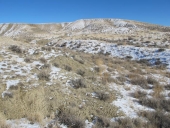
 4
4

















 1
1








Edith Stacey wrote:Hi Dale:
Looks like a great project in the works.
There is a short video by Geoff Lawton on edibles to add to a pond, some of which may do ok in your climate. http://www.youtube.com/watch?v=hJylRPl1-50
I did grow galangal in my property in Auckland, New Zealand one year, thought I'd lost it to the frost, but it came back the next year with a vengeance, lifting the edge of the raised beds. As well as providing the tubers/rhyzomes extensively used in Thai (and I believe, Indonesian) cooking, a single picked bloom in the house is wonderfully fragrant.
Are there any preventive measures you'd need to take for the invasive and distractive American Bullfrog at your site? They are causing a lot of grief here on Pender eating and decimating hummingbirds apparently and there is active and expensive efforts going on to try to control and then eliminate them. I'm told they are only an issue with ponds in the sun, so presumably that's something to do with warmer water conditions.
Stan Orchard's site has many suggestions on this at: http://www.bullfrogcontrol.com
Will be interested to watch your progress.
Cheers, Edith












 I'd like a lot of things. I sure hope my holes fill up quickly. Randy (the excavator guy) is quite confident about our chances based on past experience. In his words --- "All the water from that hill and the wet bush to the north is getting to the Nanaimo River somehow, and this place is in the way." I hope he's right.
I'd like a lot of things. I sure hope my holes fill up quickly. Randy (the excavator guy) is quite confident about our chances based on past experience. In his words --- "All the water from that hill and the wet bush to the north is getting to the Nanaimo River somehow, and this place is in the way." I hope he's right.






























Order copies of my book, Dairy Farming: The Beautiful Way at
www.createspace.com
Help spread the word! Thanks!
struggle - hustle - soul - desire




Sean Banks wrote:just a thought....have you consider bamboo for your island?.....an island in the middle of a pond would be a great way to contain its spreading.




Adam Klaus wrote:Really enjoyed all the pics from your pond tours around Victoria, Dale. Thanks for taking the time to post up all the photos. Victoria is such a beautiful place. I still remember the impression Butchart Gardens made on me when I was much younger and not even into growing yet. And another large park in Victoria that passed a blissful day in my youth. Good memories.
Good luck on your pond adventures, I get so much joy and satisfaction from the pond I built last year. Just wonderful.





 -----------------------------------------------------------------------------------------------------------------------------
-----------------------------------------------------------------------------------------------------------------------------
 I'll trick her by proposing a race. She's fast, but not faster than the old man !
I'll trick her by proposing a race. She's fast, but not faster than the old man !
















































Logan Simmering wrote:I'm wondering, what about using black locust in your hugelponic experiment to ameliorate rot issues?












Dale Hodgins wrote:.....
Willow ----- I'm not particularly enamored with willow but I will include a few large specimens just because it's something that many visitors would like to see. Willow doesn't produce fruit or wood that I'm likely to need. I will not bring in any of the multitude of tiny willows that can invade the edge of the emergent zone and fill it with useless little sticks......























 Lotus is very attractive for a root vegetable. You don't often hear people comment on the beauty of turnips and potatoes. I boiled it in sugary water as prescribed by a Thai lady. A sweet(too sweet) nutty flavor and texture similar to water chestnut. An Indian lady told me that it's better without the sugar. Instead, you lightly boil and stir fry with vegetables in a mild curry sauce. Without even trying it yet, I know I'll like this better. I hope to soon try cattail root and fluff (people eat it but I'm skeptical about the fluff), duck potato and any other aquatic plant I can find.
Lotus is very attractive for a root vegetable. You don't often hear people comment on the beauty of turnips and potatoes. I boiled it in sugary water as prescribed by a Thai lady. A sweet(too sweet) nutty flavor and texture similar to water chestnut. An Indian lady told me that it's better without the sugar. Instead, you lightly boil and stir fry with vegetables in a mild curry sauce. Without even trying it yet, I know I'll like this better. I hope to soon try cattail root and fluff (people eat it but I'm skeptical about the fluff), duck potato and any other aquatic plant I can find. 

















|
See where your hand is? Not there. It's next to this tiny ad:
Freaky Cheap Heat - 2 hour movie - HD streaming
https://permies.com/wiki/238453/Freaky-Cheap-Heat-hour-movie
|




